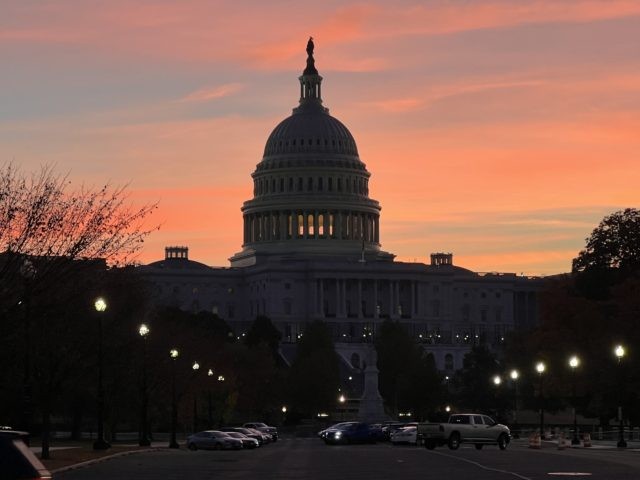Republicans have entered 2022 in a bullish mood. The conventional wisdom is that they will retake the House, and that they have a good chance of retaking the Senate as well, despite an unfavorable map.
Certainly President Joe Biden appears to be doing his best to help them, hitting a new record low approval rating of 33% in the Democrat-friendly Quinnipiac poll on Wednesday.
But Republicans aren’t doing too much yet to help themselves, and they risk wasting a golden opportunity.
First, the House. Speaker Nancy Pelosi (D-CA) has governed as if she had been given a sweeping left-wing mandate rather than a razor-thin majority, the result of unexpected Democratic losses in 2020. Her caucus, sensing doom, has apparently started to panic: as of this week, 26 incumbent Democrats had announced their retirements.
Given that the president’s party typically loses 27 seats, on average, in the House during midterm elections, Republicans are already feeling confident.
Moreover, the 2020 Census seemed to bode well for Republicans, as liberal states lost congressional seats and conservative states gained seats. Initially, one analyst predicted a gain of up to seven seats for Republicans from redistricting alone, based on the fact that Republicans already controlled so many state legislatures and even managed to increase their control in 2020.
But after the redistricting was done, Democrats actually did better than Republicans. That was partly because Democrat-run states like Illinois abandoned their plans for non-partisan, “independent” redistricting commissions, and simply used their power to gerrymander Republicans out of seats.
It was also because in states like California, the Democrats know how to game the “independent” commissions, and the new district map makes five Republican-held districts — out of eleven — more vulnerable in 2022 than they were until now.
Nationwide, Democrats may have gained up to nine seats from redistricting alone.
Now to the Senate. According to the RealClearPolitics poll averages, there are 42 seats held by each party that are either safe or not on the ballot in 2022. That leaves 14 competitive races, seven of which are considered “toss-ups.”
These include the seats held by Sens. Mark Kelly (D-AZ); Raphael Warnock (D-GA); Maggie Hassan (D-NH); Catherine Cortez Masto (D-NV); and Ron Johnson (R-WI). Two Republican-held seats — one in Pennsylvania, the other in North Carolina — are open.
Republicans must win at least four of these seven toss-up races to have a chance to take the Senate, which is currently deadlocked at 50 seats each, with Vice President Kamala Harris casting the tie breaking vote.
Unfortunately, many of these races look difficult for Republicans to win. New Hampshire is looking good enough for Democrats that Republican Governor Chris Sununu decided not to run. In addition, Republicans never seem to land a win in Nevada, despite perennial high hopes.
Ron Johnson is probably going to win in Wisconsin, though Joe Biden won there in 2020, which should make it a tough race. Arizona is a possible opportunity, as is Georgia, but Republican voters could be discouraged by former President Donald Trump’s persistent claims of fraud.
Democrats usually fall short in North Carolina, but Pennsylvania is doubtful, and the GOP field there is muddled after the departure of frontrunner Sean Parnell.
In sum, there is no easy path to a Senate majority.
Overall, in early December, some polls had Republicans leading the generic congressional ballot by 10 points. But that margin is gone– not because Democrats are becoming more popular, but because Republicans are becoming less so.
The party seems absorbed in political sideshows, not the bread-and-butter issues that appealed to suburban voters — especially women — in the off-year election in November.
Unless the GOP can pull itself together, it may remain in the minority.
Then there is the question of 2024. Sen. Lindsey Graham (R-SC) has been vocal in his view that the Republican nomination is Trump’s to lose. And every day that Biden breaks something that Trump had largely fixed — like the border, or the Middle East, or the economy — Trump’s prospects look better.
But there is no doubt that some of the voters who crossed over to the GOP in 2021 would have serious qualms about voting for Trump. Many people are simply tired of the chaos in public life.
There are certainly other contenders in the GOP field, some of whom would push for Trump-like policies. But it is unclear whether any of them would risk alienating the Trump base — which is highly energized, even if it is still a minority of the party — by challenging him.
Right now, Democrats’ focus on Trump seems unlikely to help them keep control of Congress. But it may be a good strategy once the midterms are out of the way. If Trump wants to win, he needs to move beyond 2020.
Joel B. Pollak is Senior Editor-at-Large at Breitbart News and the host of Breitbart News Sunday on Sirius XM Patriot on Sunday evenings from 7 p.m. to 10 p.m. ET (4 p.m. to 7 p.m. PT). He is the author of the recent e-book, Neither Free nor Fair: The 2020 U.S. Presidential Election. His recent book, RED NOVEMBER, tells the story of the 2020 Democratic presidential primary from a conservative perspective. He is a winner of the 2018 Robert Novak Journalism Alumni Fellowship. Follow him on Twitter at @joelpollak.

COMMENTS
Please let us know if you're having issues with commenting.